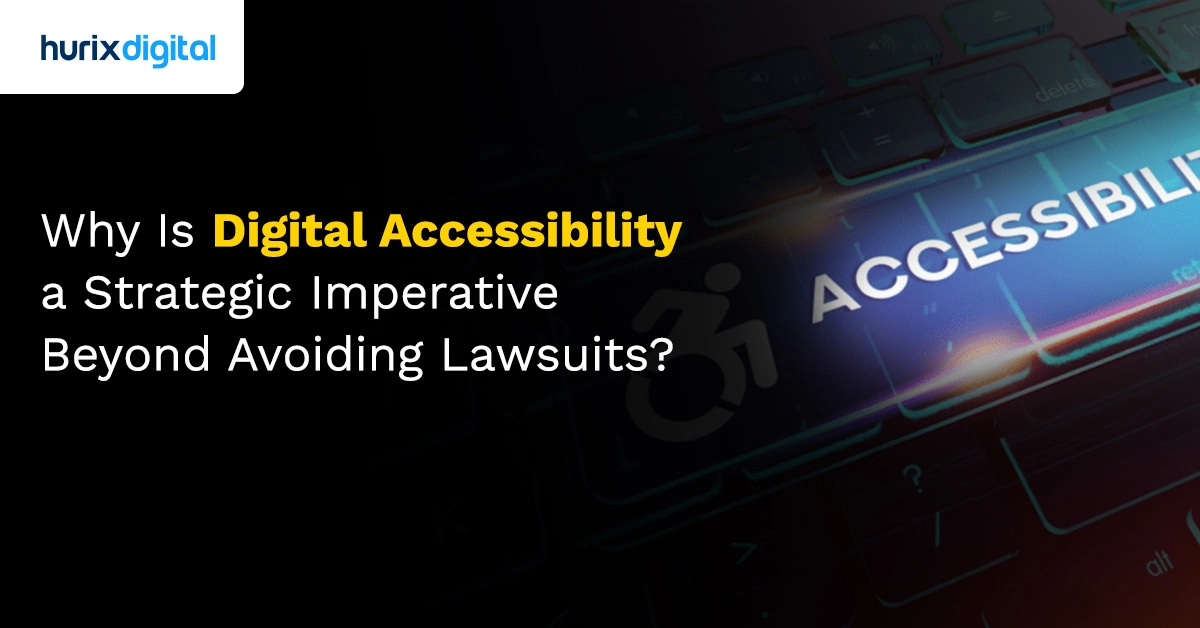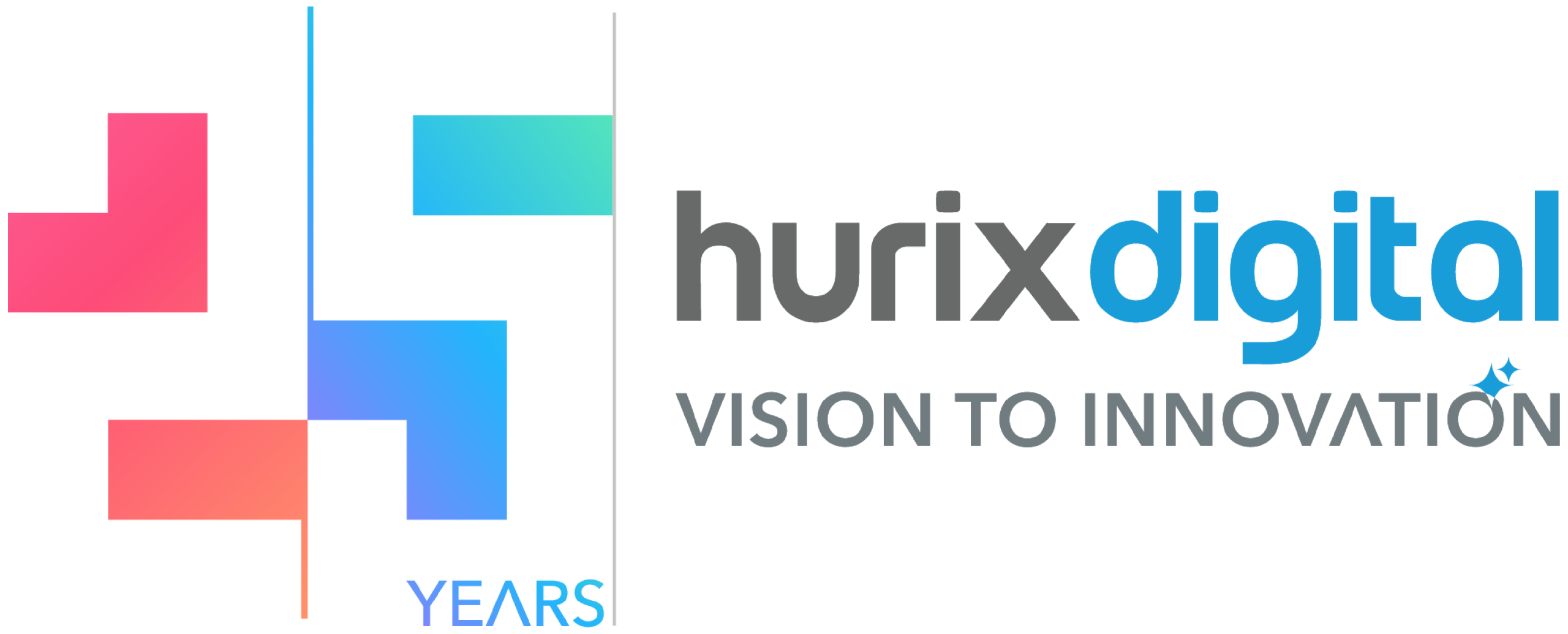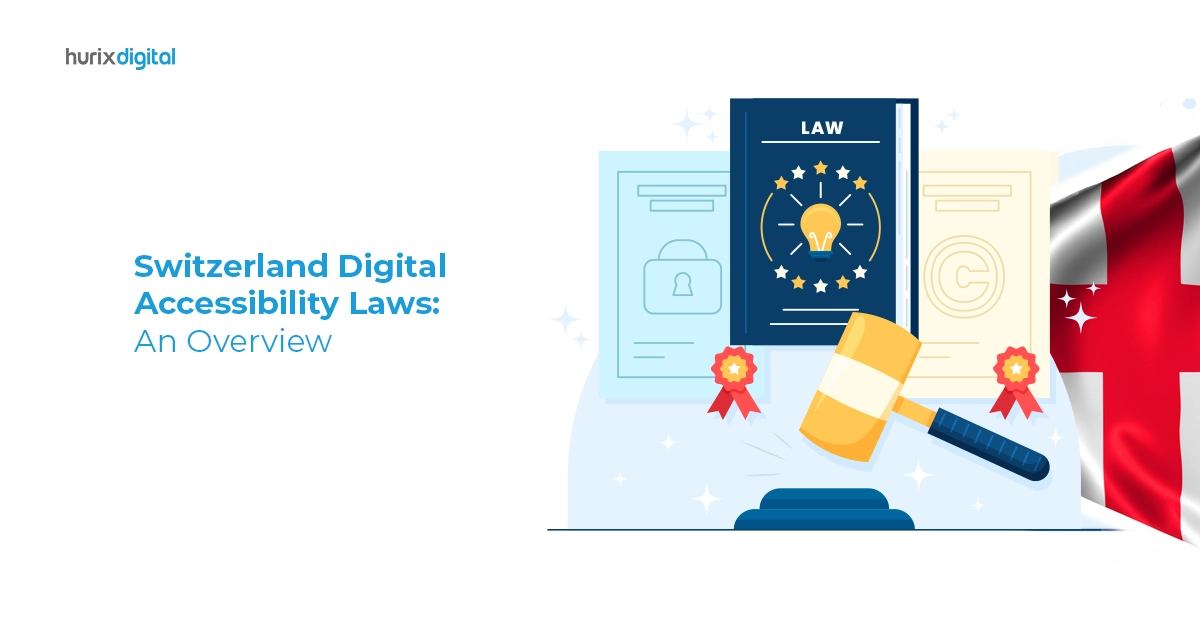
Why Is Digital Accessibility a Strategic Imperative Beyond Avoiding Lawsuits?
Summarize with:
Most still grapple with the underlying question of digital accessibility. Is it merely a checkbox of compliance or a defensive stance against future litigation? For several years, this limited mindset controlled the narrative. The reality is that caring about accessibility solely because of compliance actually means you’re missing the larger picture: Genuine digital inclusion is far more than mere compliance with regulations. It’s about creating experiences that work for all, a promise that demands so much more than cosmetic repairs and checkbox routines. This deeper knowledge poses vital questions that keep good leaders awake at night, particularly given the scope of digital accessibility examples throughout different platforms.
Think about actual complexities: How do we actually quantify the ROI of digital accessibility services, more than simply mitigating risk? What does it really require to embed it into a current development lifecycle in such a way that it becomes an inherent part of how teams develop, as opposed to something secondary? How do we make these efforts sustainable in the long term, not just a short-term project? These are not easy issues with easy solutions. They require honest evaluation of internal strengths, a well-informed selection of partners, and a vision for how the new technologies will alter the terrain. It’s really about seeing how accessibility, when fully realized, can be a powerful catalyst for competitive innovation, rather than a cost factor.
Table of Contents:
- What is Digital Accessibility Beyond Compliance?
- How Can True ROI from Digital Accessibility Services be Measured?
- Why Does Digital Accessibility Non-Compliance Carry Legal Risks?
- When Should Accessibility Be Integrated Into Your Development Lifecycle?
- How Do You Choose the Right Digital Accessibility Services Partner?
- Why Build Internal Accessibility Expertise and Culture?
- What is the Impact of Emerging Technologies on Future Digital Accessibility Services?
- Why is Scaling Digital Accessibility Across Your Enterprise Essential?
- Conclusion
What is Digital Accessibility Beyond Compliance?
Digital accessibility means designing and creating online content and tools – like websites, apps, and documents – so everyone can use them, regardless of their abilities. It ensures people with disabilities can perceive, understand, navigate, and interact with digital information easily.
Real digital accessibility, which really counts, extends considerably beyond legal compliance. It’s a compassionate attitude, a design ethos. It’s about acknowledging the huge diversity of human experience, realizing that ability is not fixed. A person may have a permanent disability, absolutely. But think of the person attempting to access your site on a shiny, sunny phone screen in sunlight outside, or the parent supporting a baby, with one hand. Or perhaps a person experiencing a short-lived concussion, in which screen flicker or sophisticated navigation is out of the question. These aren’t edge cases; they’re common realities that good design, informed by an accessible mindset, confronts.
It becomes apparent, then, that this is not merely about not getting sued. That’s a transactional approach. True accessibility is about inclusion, respect. It’s about making sure every single person has equal access to information, services, and opportunities on the internet. It’s about creating experiences so naturally, someone who is screen-reading or keyboard-navigating does not sense that they are in a foreign land, but are instead traversing a space designed with them as an afterthought.
Consider this: when an online form is clunky and inaccessible, someone isn’t just bothered. They may not be able to get a job, find out about healthcare, or stay in touch with family. It’s a barrier to life itself. So, going beyond compliance is a matter of asking deeper questions: “Have we really thought through how every single user engages with this?” “Are we simply checking boxes, or are we attempting an experience that is seamless and inclusive for every individual?” It’s an ongoing, iterative conversation, not a project done. And it’s always, always about people. And this responds to the basic question, “Why is digital accessibility important?”
How Can True ROI from Digital Accessibility Services be Measured?
Measuring the actual return on investment from digital accessibility services can sometimes feel like trying to catch smoke. It’s rarely a straight line from “we fixed our website” to “our profits jumped by X percent.” That direct causation is a beautiful dream, but the real world is messier.
Of course, there are the more obvious wins: reduced legal exposure. Nobody wants a demand letter, right? Those things cost serious money beyond settlement amounts. Think about the sheer drain on internal resources: legal team hours, executive stress, and public relations headaches that follow. That’s a measurable cost avoidance, a tangible benefit preventing a deep financial wound.
But the real, deeper value often lies in market expansion and retention. Think about it: a truly accessible digital space opens your doors to an entire demographic you might have inadvertently excluded, going beyond mere compliance. We’re talking about millions of potential users who might have previously given up in frustration. When someone who uses a screen reader can navigate your site smoothly, complete a purchase, or find the information they need without hitting a barrier, that’s not just a good deed; it’s a new or retained customer. Some reports indicate that companies improving accessibility see significant revenue increases; for instance, some studies suggest that consumer companies lose as much as $6.9 billion annually due to inaccessible websites.
So, how do you measure that? You have to look beyond direct, immediate sales. Consider reduced customer support calls related to site navigation or content access issues. If your support team spends less time troubleshooting fundamental accessibility barriers, that saves staff hours and improves user experience. Track bounce rates and session durations for users accessing your site with assistive technologies – are they staying longer? Are they completing more tasks, like filling out a form or adding items to a cart? It’s harder to isolate these, sure, but look for trends. An improved user experience for one group often spills over, making the site better for everyone. It’s like paving a smoother road; everyone benefits, not just those needing a ramp.
It’s not perfect science, mind you. You won’t always find a neat little formula. There are intangible gains, too, like brand reputation. Being known as an inclusive, thoughtful organization becomes a powerful asset in a competitive landscape. Can you put a precise number on goodwill? Not easily, but it’s very real. Sometimes, the true ROI isn’t just about the money you make, but the money you don’t lose, and the trust you build.
Why Does Digital Accessibility Non-Compliance Carry Legal Risks?
When companies neglect digital accessibility, especially for websites and digital platforms, they invite a legal environment full of risk. It’s not an abstract issue; the implications are real, usually costly, and, quite frankly, disruptive. The immediate and biggest question usually comes from private lawsuits, mainly under the Americans with Disabilities Act (ADA digital accessibility). Even though the ADA does not specifically refer to websites, courts have increasingly applied its Title III, which requires equal access for people with disabilities to public places, to digital places as well. This absence of explicit federal guidance has ironically been driving a litigation boom. It is somewhat of a wild west situation where legal precedents are established case by case. In 2024, over 4,000 cases were brought in federal and state courts, stating that company websites and mobile apps did not meet ADA Title III.
Think about the real-world implications: There is a possibility that a company may receive a demand letter asserting that its website is not accessible by a screen reader to individuals with vision impairments. This is not an amiable suggestion; it’s the precursor to a lawsuit. Even if a business feels that it has a solid defense, the expense of litigation – attorney fees, discovery, expert witnesses – can rapidly get out of hand. Most companies settle, and such settlements are not inexpensive. They usually entail a substantial monetary payment, a commitment to bringing the website to certain digital accessibility levels (such as WCAG), and in many cases, a requirement for ongoing monitoring and reporting over a number of years. It is a long-term promise resulting from a short-term crisis.
Aside from the ADA, numerous states, including California with its Unruh Civil Rights Act and New York with its Human Rights Law, have their own strong accessibility laws. These state e-accessibility statutes frequently allow for statutory damages, piled on top of federal claims, that make the financial blow even more severe. It’s a situation repeated again and again: a business, maybe well-meaning but just ignorant, gets blindsided by a lawsuit, suddenly staring not only at a technical update but a very genuine financial siphon and serious reputational harm. The risk of law isn’t merely losing the case; it’s the sheer expense and diversion of going through the legal system at all.
When Should Accessibility Be Integrated Into Your Development Lifecycle?
Weaving digital accessibility into an established development lifecycle often feels like trying to re-thread a needle mid-stitch. Many teams, understandably, see it as an extra step, a compliance hurdle, or something bolted on at the end. But the truth is, accessibility becomes a foundational element, much like security or performance, rather than an add-on. Think of it: building a ramp after the building is already up is far more costly and disruptive than designing the entrance with one from the very first blueprint. The same holds true for digital products.
It begins not with coding, but with empathy, right at the discovery phase. When defining requirements, one should be asking: “Who might struggle here? What if someone can’t use a mouse, or see the colors clearly?” This isn’t just about checklists; it’s about real people. It’s about designing for the widest possible audience from the jump. A product manager might push for a quick, flashy animation, but a thoughtful team will pause to consider if that animation is distracting, or worse, a trigger for someone with a vestibular disorder. That critical conversation happens early.
Next, in the design phase, it’s about more than aesthetics. It’s about structure. Can a screen reader make sense of this layout? Are the contrast ratios sufficient? Are interactive elements navigable by keyboard? One remembers countless times a designer, proud of a sleek button, realized it had zero visual indication for keyboard focus. A quick fix then; a nightmare later.
During development, diligent craftsmanship is essential. This includes semantic HTML, correct ARIA attributes, and proper tab order. It’s not glamorous, but it prevents the “tech debt” of inaccessibility. Many developers just slap a generic element on everything, forgetting the inherent meaning of interactive controls or navigational structures. The pain of refactoring is later palpable.
And testing? Absolutely vital. Automated digital accessibility tools catch a lot, a good start, but they don’t tell the whole story. They can’t confirm if the user experience is good for someone relying on a keyboard, or if the alt text makes sense out of context. Manual testing, ideally with diverse users, provides critical feedback. It’s like checking if a recipe tastes good; you can measure ingredients perfectly, but you still need to taste it.
Ultimately, it’s a conversation that continues. Digital goods change over time. New features mean you have to think about accessibility in new ways. It is never “done.” It’s a way of thinking and a commitment that never ends. It’s not about a big, scary change; it’s about incorporating small, mindful practices at every step, so that accessibility becomes just another part of quality. And to be honest, it’s a much more satisfying way to build.
How Do You Choose the Right Digital Accessibility Services Partner?
Selecting a digital accessibility services partner becomes more like choosing a reliable guide for a complicated, long-term journey rather than checking boxes off a list. Among the very first things that a considerate professional asks himself or herself is not only what the partner knows, but how thoroughly they know the client’s specific world. Is their expertise limited to reciting WCAG guidelines, or do they truly grasp the real-world implications for a specific industry, say, healthcare or e-commerce? A genuinely good partner doesn’t just point out issues; they explain why it’s an issue for your users, within your operational constraints.
Then there’s the process. Does their strategy only depend on automated digital accessibility tools? Those are a good beginning point, to be sure, like a speedy health check. In order for accessibility to be effective, it must be focused on real people, tested by real people. Does their procedure encompass diverse user testing? Do they explicitly include people with disabilities as active participants in their testing? Without that crucial human element, it’s akin to designing a chair for someone you’ve never seen. It might look right on paper, but it won’t truly fit.
Communication is a large one. Are they effective teachers? A partner should teach, not simply report. If they speak to you about your button contrast being off, do they also tell you about the principle of contrast ratios, and maybe demonstrate several ways to correct it that are compatible with your brand, rather than insisting on a correction? It’s not about providing a defects list. It’s creating internal capability, making the team smarter. A great partner makes you better prepared for the next project, not just compliant for this one.
Rather than reading through rules, you need to find someone who can translate those rules into relevant, actionable advice specific to your team’s workflow. There is a universe of difference between being familiar with what WCAG 2.2 has to say about keyboard navigation and grasping how an intricate, interactive dashboard must be re-architected without disrupting its essential functionality or demanding a full rebuild. You’re seeking empathy, sure, but also hard-nosed practical engineering acumen.
And honestly, sometimes you just have a feeling about it. Do they sound really excited about inclusive design, or only about getting a contract? Have they talked about examples of things that didn’t work out, and how they’ve learned to adjust? That kind of authenticity, that ability to expose flaws, typically means real experience. It indicates they’ve been down in the trenches. It says they’re prepared for the bumps in the road that are inevitable, not only the smooth sections. Because in this place, there are always bumps. Always.
Why Build Internal Accessibility Expertise and Culture?
Building internal expertise around accessibility isn’t just about ticking boxes on a compliance checklist; it’s about a fundamental shift in how an organization designs, builds, and delivers. Companies relying solely on external audits or sporadic consultations often find themselves in a reactive cycle, fixing issues after they’ve been created. True progress and a truly inclusive product come when accessibility becomes an innate skill set, a shared understanding baked into the very fabric of development and design.
Consider the craft of a master carpenter. They don’t build a house and then call in a structural engineer to check if it’s safe. Safety and stability are inherent in every cut, every joint. Similarly, an “accessibility-first” culture means accessibility isn’t an add-on; it’s the foundational blueprint. This requires equipping every designer, every developer, every content creator with the knowledge to build accessible experiences from the ground up. Specifically, it’s about understanding screen reader behavior, the importance of keyboard navigation, and the impact of color contrast. These are all critical aspects of adhering to robust digital accessibility standards.
According to a Forrester study, accessibility training and inclusive design practices can reduce remediation costs by up to 80% when integrated early in the development process.
Cultivating this deep-seated expertise often starts small. Perhaps it’s a passionate product manager championing training sessions, or a curious developer who spends their lunch break exploring assistive technologies. These internal champions become the seeds from which knowledge sprouts. Then, the organization must nurture this growth. It might mean setting up internal guilds, sharing success stories, or even—and this is crucial—making accessibility a measurable part of performance, not just a suggestion. It’s about establishing patterns: design systems with accessibility built in, code reviews that specifically flag accessibility pitfalls, and user testing that includes individuals with diverse needs.
It’s not always easy, of course. There’s often a bit of a pushback: “Do we really have time for this?” “Will it slow us down?” But the thoughtful organizations understand that building in accessibility isn’t a detour; it’s the main road to creating better, more robust, and ultimately more widely used products for everyone. It cultivates a kind of design empathy that stretches beyond the initial legal requirements, leading to innovation born from truly understanding the vast spectrum of human interaction.
What is the Impact of Emerging Technologies on Future Digital Accessibility Services?
It’s a question that keeps accessibility professionals on their toes, isn’t it? For so long, we’ve been trying to fit square pegs into round holes, adapting existing digital structures. But the next wave of tech, it feels different. It suggests a shift in how we approach things entirely, especially concerning future digital accessibility services.
Take artificial intelligence, for instance. We’re already seeing automated captioning, and image descriptions powered by AI. It’s not perfect, far from it. Auto-generated captions can sometimes result in hilarious, sometimes frustrating gaffes. But imagine these systems becoming truly sophisticated. Think about someone with a cognitive disability trying to understand a complex legal document. Future AI services could summarize and rephrase that document into plain language, on demand, tailored to their specific reading level. Not a one-size-fits-all “easy read,” but something truly personal. Our service, then, shifts from manual simplification to quality control and highly specialized refinement of what the machine produces. We become curators, educators, ensuring humanity isn’t lost.
Then there’s the whole realm of virtual and augmented reality. For years, digital accessibility focused on making web accessibility a baseline—ensuring websites and apps were usable for everyone, regardless of ability. But what happens when our digital spaces become truly immersive? This isn’t just about making VR accessible, which is a massive challenge in itself. It’s about how VR could deliver accessibility services. Picture this: a person with severe anxiety might practice navigating a busy virtual street, with accessibility features custom-built into that simulated environment, before stepping out into the real world. Or, a digital accessibility consultant could virtually walk through a new building’s digital twin, identifying barriers before construction even begins. The service isn’t a report anymore; it’s an interactive walkthrough.
The most significant change ahead is moving from patch-up fixes to built-in accessibility. Until now, we’ve lived on the back foot, wherein tech gets released, and we rush to make it usable. With smart AI, data that predicts needs, and design tools that let us see the whole picture, we can now weave accessibility into products right from day one. Picture a design app that spots potential barriers while you’re still sketching. The process flips from retrofitting a ramp after the building is finished to including the ramp in the first drafts. This changes our job from reacting to problems to anticipating them, and that’s a powerful shift. It feels good to think a ramp won’t even be a day-one afterthought. Still, stepping into this future means we must grow and pick up a new toolbox of skills.
Why is Scaling Digital Accessibility Across Your Enterprise Essential?
Scaling digital accessibility across a sprawling enterprise, well, that’s rarely a straight line. It’s more like trying to turn a supertanker in a bathtub, or, perhaps, coaxing a hundred different rivers to flow into the same lake. Many organizations, with the best intentions, try to bolt it on at the end. They’ll finish a huge digital product, then toss it over the fence to a small, dedicated accessibility team for a quick fix. That’s where the budget bleeds, and the frustration mounts. It just doesn’t work. It often feels like painting a car after it’s already on the showroom floor, rather than designing the paint job as part of the initial engineering.
The real trick, the one that seasoned practitioners understand deeply, is making it fundamental. It’s about embedding it into the very first sketch, the initial design conversation. Think about the architect who considers a ramp for a wheelchair from day one, not as an afterthought during construction.
This means fostering a sense of shared ownership. It’s not just the dedicated accessibility team’s job; it’s the product manager’s, the designer’s, the developer’s, even the content writer’s. They need foundational knowledge, certainly, but more importantly, they need to understand why it matters. One approach that often works is establishing internal ‘champions’ within different departments. These individuals often start without being accessibility experts from day one, yet they bring curiosity and empathy to bridge gaps, asking the right questions and gently nudging their peers forward. They become the local eyes and ears, the informal educators.
It’s a slow burn, honestly. There will be resistance. Some will see it as extra work, an unwelcome hurdle. Others will genuinely forget best practices amidst project pressures. Old habits die hard. The key is patience, consistency, and celebrating those small victories – the design team that independently ran their first accessibility check, the developer who proactively considered keyboard navigation without prompting. It’s a marathon, certainly, with plenty of tripped laces along the way, but each step builds momentum. You learn from the stumbles. That’s how real progress gets made, piece by piece.
Conclusion
Moving beyond compliance in digital accessibility becomes a strategic imperative rather than just a lofty ideal. As we’ve explored, the question of “why is digital accessibility important” extends far beyond avoiding ADA digital accessibility lawsuits and adhering to digital accessibility laws. It’s about tapping into new markets, enhancing brand reputation (with studies showing that 89% of individuals with disabilities encounter accessibility issues, often leading them to switch brands), and fostering genuine inclusion through diverse digital accessibility examples.
Embracing robust digital accessibility standards and leveraging the right digital accessibility tools ensures that your enterprise isn’t just ticking boxes, but truly building experiences that work for everyone. This holistic approach, integrating digital accessibility services throughout your development lifecycle, transforms it from a cost center into a powerful driver of innovation, preparing you for the evolving landscape shaped by emerging technologies. Want to make your digital experiences truly accessible? Let’s talk. Contact us today to discover how our digital accessibility services can help you meet compliance, drive innovation, and serve everyone better.
Summarize with:

Vice President – Content Transformation at HurixDigital, based in Chennai. With nearly 20 years in digital content, he leads large-scale transformation and accessibility initiatives. A frequent presenter (e.g., London Book Fair 2025), Gokulnath drives AI-powered publishing solutions and inclusive content strategies for global clients
 Upcoming Masterclass | Build an Army of Brand Evangelists using Training & Development | November 20th, 8:30 AM PDT | 11:30 AM EDT | 10:00 PM IST
Upcoming Masterclass | Build an Army of Brand Evangelists using Training & Development | November 20th, 8:30 AM PDT | 11:30 AM EDT | 10:00 PM IST




